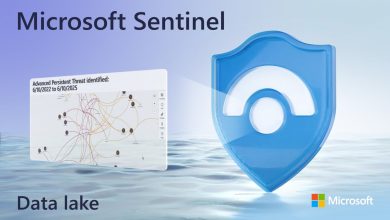Unlocking Zero Trust with Microsoft Entra in the Era of AI
Microsoft Entra, a family of identity and access management (IAM) solutions, provides a comprehensive platform to implement Zero Trust principles.
 As Joy Chik explains in this case study, the U.S. Department of Labor has been transitioning to a Zero Trust security model with Microsoft Entra ID to enhance security and modernize authentication.
As Joy Chik explains in this case study, the U.S. Department of Labor has been transitioning to a Zero Trust security model with Microsoft Entra ID to enhance security and modernize authentication.
Facing 2022 regulations for stricter cybersecurity, DOL adopted phishing-resistant multifactor authentication (MFA) using device-bound passkeys via the Microsoft Authenticator app, supplementing personal identity verification (PIV) cards.
They also implemented dynamic, risk-based Conditional Access policies with Microsoft Entra ID Protection, assessing sign-in, user, and device risks. These policies enforce least privilege access, blocking high-risk users and requiring reauthentication based on risk levels (e.g., low-risk regular users reauthenticate periodically, while privileged users with any risk are blocked).
This consolidation of identity systems and enhanced authentication has improved DOL’s security posture, aligning with federal Zero Trust requirements.
Zero Trust with Microsoft Entra
Microsoft Entra, a family of identity and access management (IAM) solutions, provides a comprehensive platform to implement Zero Trust principles—”never trust, always verify,” explicit verification, least privilege access, and assume breach—across hybrid and multi-cloud environments.
Microsoft Entra includes tools like Microsoft Entra ID (formerly Azure Active Directory), Entra ID Protection, Entra ID Governance, and Entra Verified ID, which collectively enable Zero Trust by securing identities, enforcing access policies, and managing permissions. These components integrate with Microsoft’s broader security ecosystem (e.g., Microsoft Defender, Sentinel) and third-party solutions to provide end-to-end protection.
Entra ID supports phishing-resistant MFA methods, such as device-bound passkeys (e.g., via Microsoft Authenticator app) and FIDO2 security keys, which are harder to compromise than SMS or email-based MFA. For example, DOL implemented passkeys to replace or supplement personal identity verification (PIV) cards, meeting 2022 federal mandates for stronger authentication.
Cyber AI Challenges and Innovations
Furthermore in a recent Microsoft Ignite talk, Joy Chik discussed the importance of security innovation in enhancing cyber defense strategies in the era of AI, describing:
- Embracing AI for Threat Detection: Leveraging AI technologies to detect and respond to cyber threats more effectively.
- Zero Trust Security Model: Implementing a zero trust approach to security to ensure that no entity, whether inside or outside the network, is trusted by default.
- Continuous Monitoring and Response: Establishing mechanisms for continuous monitoring of security threats and timely response to incidents.
- Adaptive Security Framework: Developing an adaptive security framework that can evolve and adapt to changing threat landscapes.
- Collaboration and Information Sharing: Promoting collaboration and information sharing among security professionals to enhance collective defense capabilities.
Chik also highlighted the challenges faced in implementing advanced security measures and the opportunities that arise from embracing innovative technologies. She emphasized the need for organizations to stay proactive and agile in their approach to cybersecurity.
Overall, Joy Chik’s talk at Microsoft Ignite underscored the critical role of security innovation in fortifying cyber defense strategies in the age of AI. By leveraging cutting-edge technologies and adopting a proactive mindset, organizations can better protect their digital assets and mitigate the evolving threats in today’s digital landscape.



